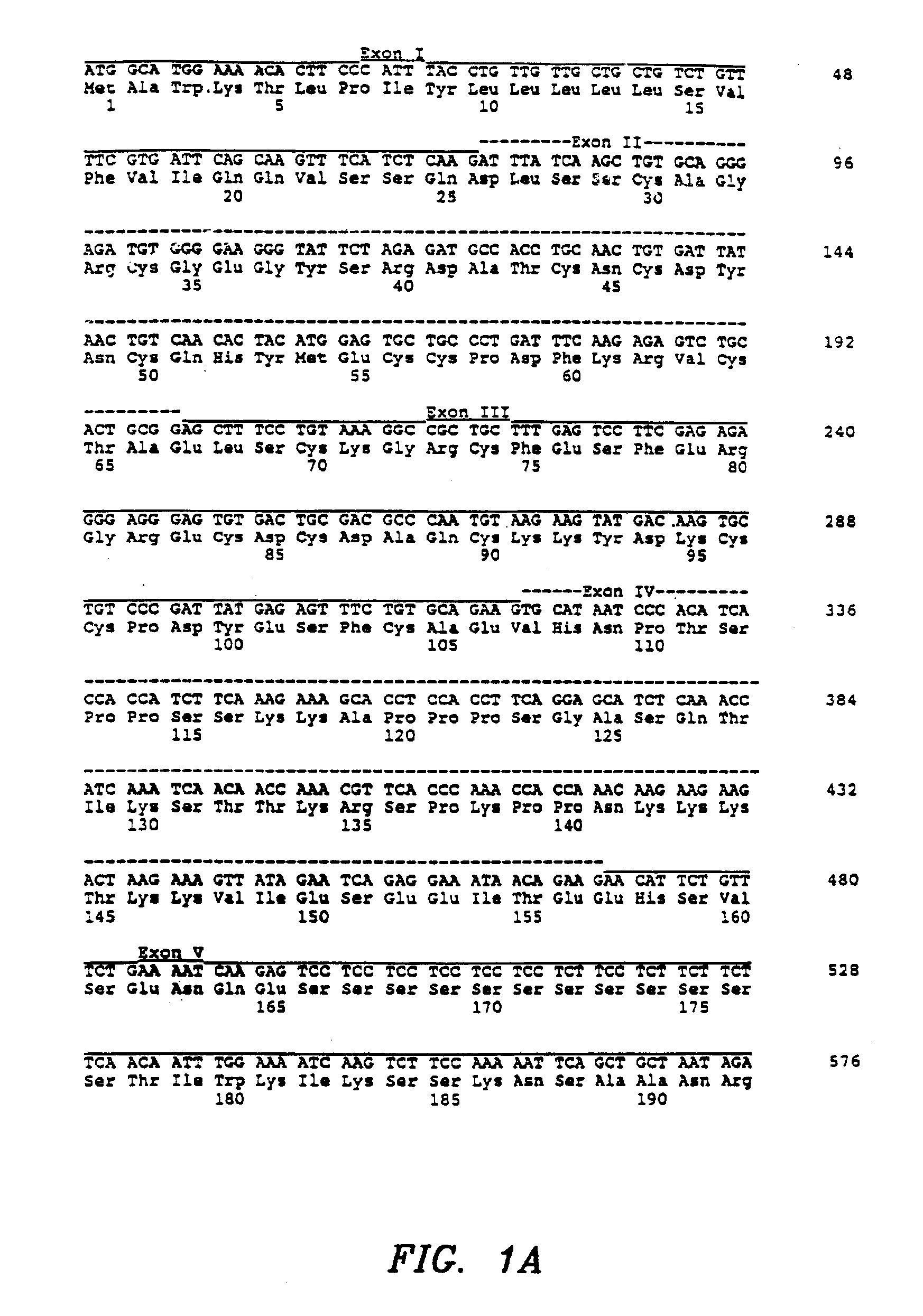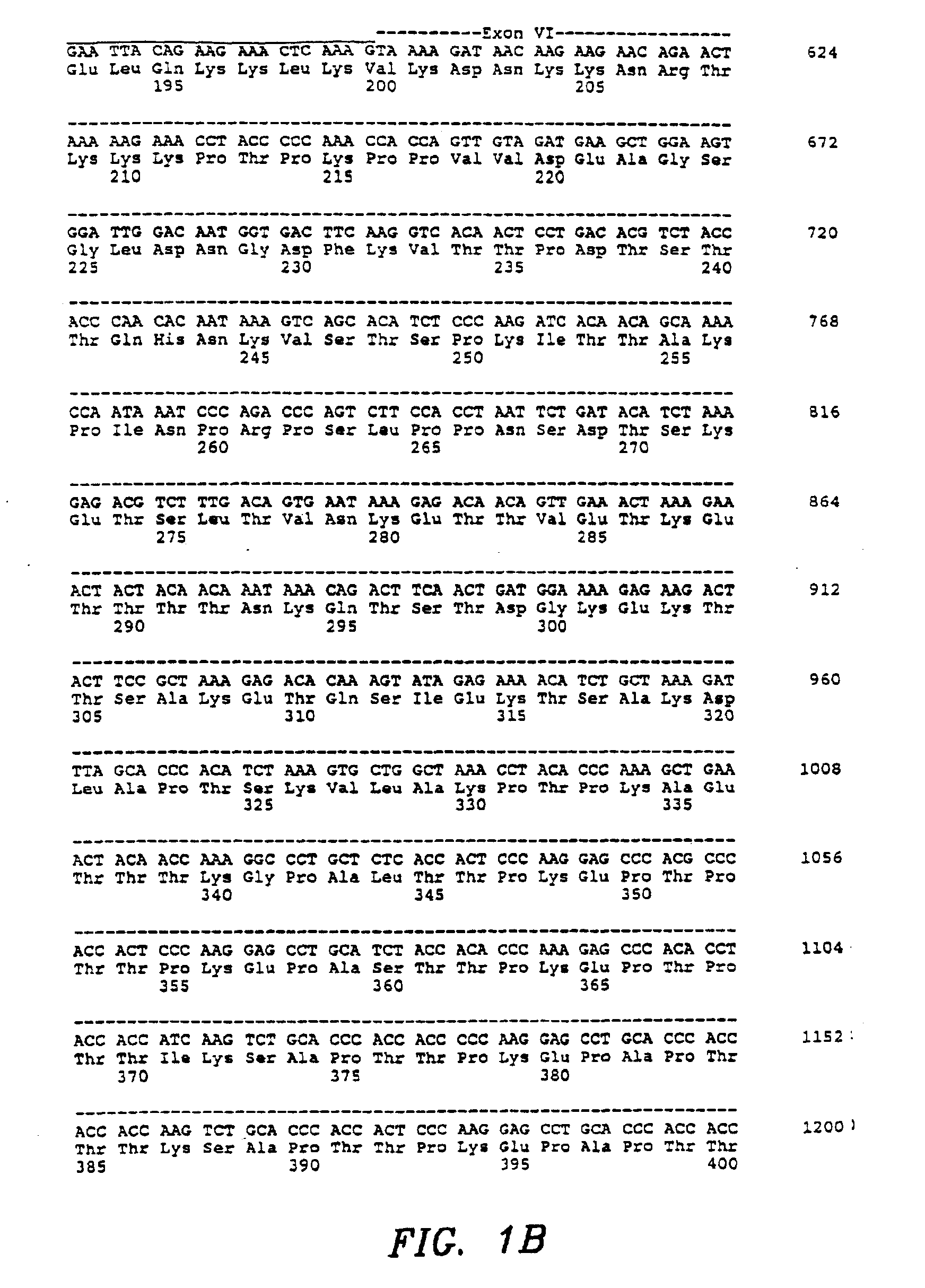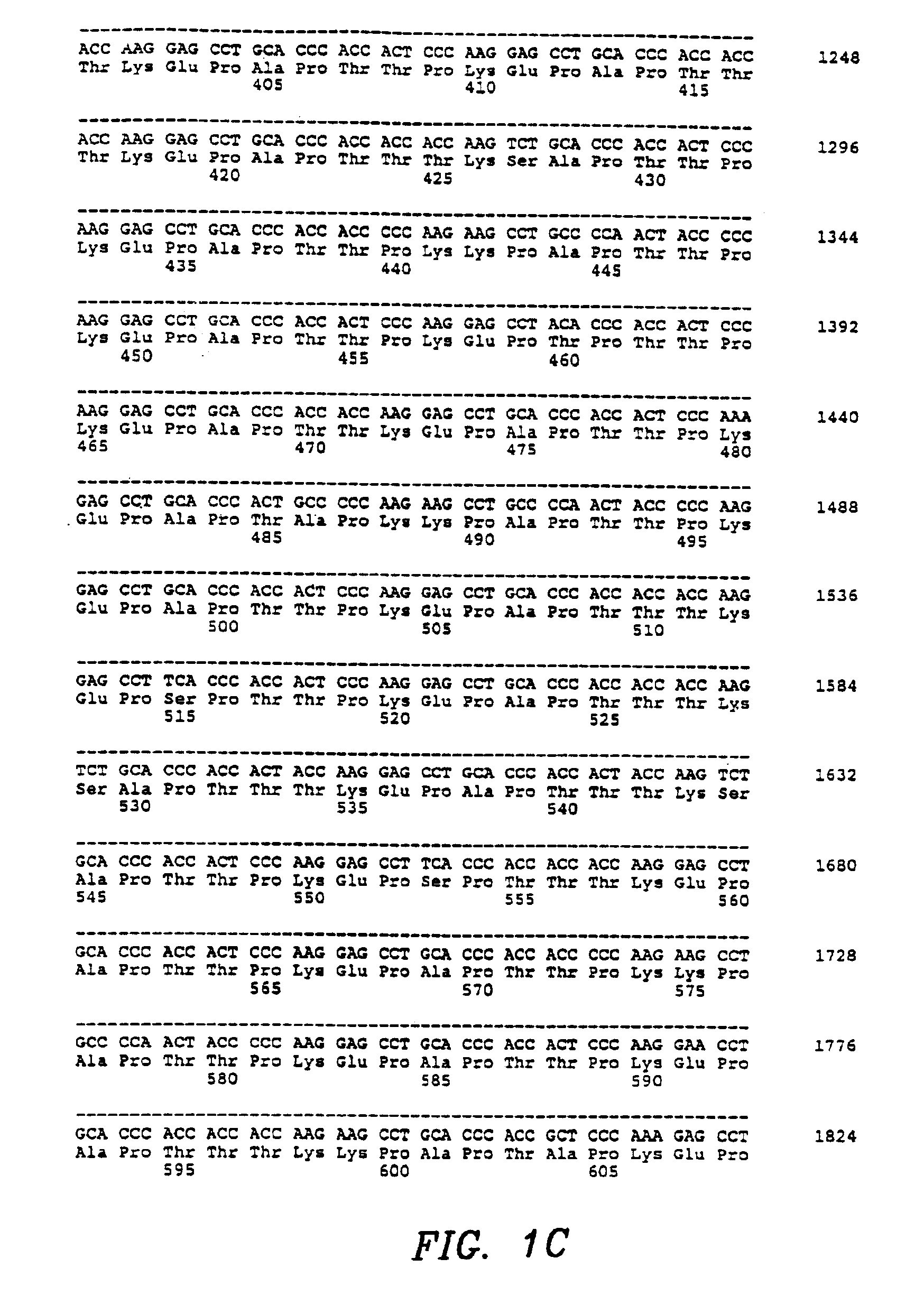Megakaryocyte stimulating factors
a technology of macrokaryocytes and stimulating factors, applied in the field of macrokaryocyte stimulating factors, can solve the problems of inability to form clots, relatively short shelf life of transfusion, and patients exposed to considerable risk of exposure to dangerous viruses
- Summary
- Abstract
- Description
- Claims
- Application Information
AI Technical Summary
Benefits of technology
Problems solved by technology
Method used
Image
Examples
example 1
Purification of Native meg-CSF from Urine
[0135]The following procedures are employed to obtain native meg-CSF protein from urine of human bone marrow transplant patients. The same or similar procedure may be employed to purify other MSFs from natural sources. Urine from patients with aplastic anemia or thrombocytopenia accompanying other disease states may also be used as the source of the factor employing this purification.
[0136]STEP 1: Urine was collected from bone marrow transplant patients between days 5 and 18 following transplant. One hundred liters of pooled urine were treated with protease inhibitors phenylmethyl-sulfonylfluoride (PMSF) and ethylenediaminetetraacetic acid (FDTA). This pooled urine was concentrated on an Amicon YM-10 filter (10,000 molecular weight cut-off) to remove excess pigments and reduce the volume. A cocktail of protease inhibitors [leupeptin, aprotinin, ethylene glycol-bis-tetraacetic acid (EGTA) and N-ethylmaleimide (NEM)] was added to the urine at t...
example 2
Analysis of Genomic MSF, meg-CSF
[0146]A preliminary analysis of COS supernatant expressing the Kpn-SnaB1 12 kb genomic subclone was performed previously, and indicated that a protein which reacted with MSF-specific antibodies was expressed by COS cells and was secreted into the culture medium. Dialysed, concentrated cell supernatant was variably active in the murine meg-colony assay.
[0147]Analysis by Northern and Western indicated that the level of MSF mRNA and protein was very low. A Western immunoblot of the protein from COS supernatant expressed in conditioned medium revealed the presence of three heterogenous species which specifically bind anti-meg CSF peptide antibodies and the binding can be competed with excess peptide. The molecular weights of these species, 200 kD, 30 kD, and 14 kD, are different from the partially purified meg-CSF from the BMT urine which has an apparent molecular weight ranging between about 18—about 28 kD under reducing conditions.
example 3
Mammalian Cell Expression of MSF-K130
[0148]Recombinant MSFs were obtained by the following techniques. Six MSF cDNA clones, truncated at putative MSF protein processing sites in Exons V and VI, were constructed by using the polymerase chain reaction. A seventh clone, MSF-K130 [SEQ ID NO: 77 and 78], was isolated as a consequence during the PCR reaction by the inadvertent insertion of an artificial termination codon in Exon IV after amino acid 130. Seven oligonucleotide primers were synthesized as follows:
[0149](1) CGCGCGGCCGCGACTATTCG [SEQ ID NO: 124]
[0150](2) GCGCTCGAGVTAAGAGGAGGAGGA [SEQ ID NO: 125]
[0151](3) GCGCTCGAGCTATCTATTAGCAGC [SEQ ID NO: 126]
[0152](4) GCGCTCGAGCTACTTGTTATCTTT [SEQ ID NO: 127]
[0153](5) GCGCTCGAGCTAATCTACAACTGG [SEQ ID NO: 128]
[0154](6) GCGCTCGAGCTAGTTTGGTGGTTT [SEQ ID NO: 129]
[0155](7) GCGCTCGAGCTAAGTTCTGTTCTT [SEQ ID NO: 130]
[0156]Primer (1) was designed to hybridize to the cDNA flanking the initiating methionine codon and contains nine MSF-homologous nucle...
PUM
| Property | Measurement | Unit |
|---|---|---|
| molecular weight | aaaaa | aaaaa |
| conductivity | aaaaa | aaaaa |
| concentration | aaaaa | aaaaa |
Abstract
Description
Claims
Application Information
 Login to View More
Login to View More - R&D
- Intellectual Property
- Life Sciences
- Materials
- Tech Scout
- Unparalleled Data Quality
- Higher Quality Content
- 60% Fewer Hallucinations
Browse by: Latest US Patents, China's latest patents, Technical Efficacy Thesaurus, Application Domain, Technology Topic, Popular Technical Reports.
© 2025 PatSnap. All rights reserved.Legal|Privacy policy|Modern Slavery Act Transparency Statement|Sitemap|About US| Contact US: help@patsnap.com



